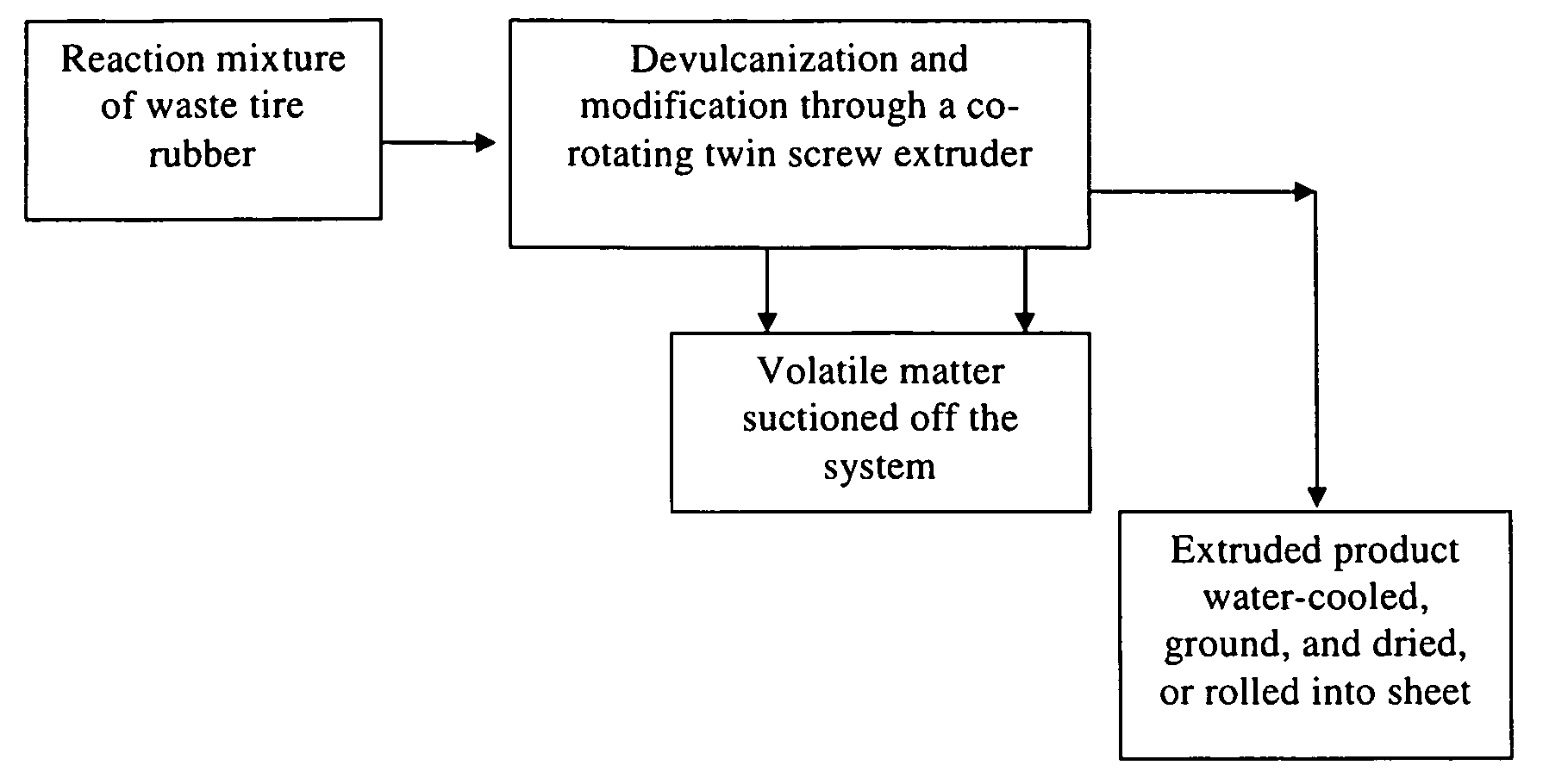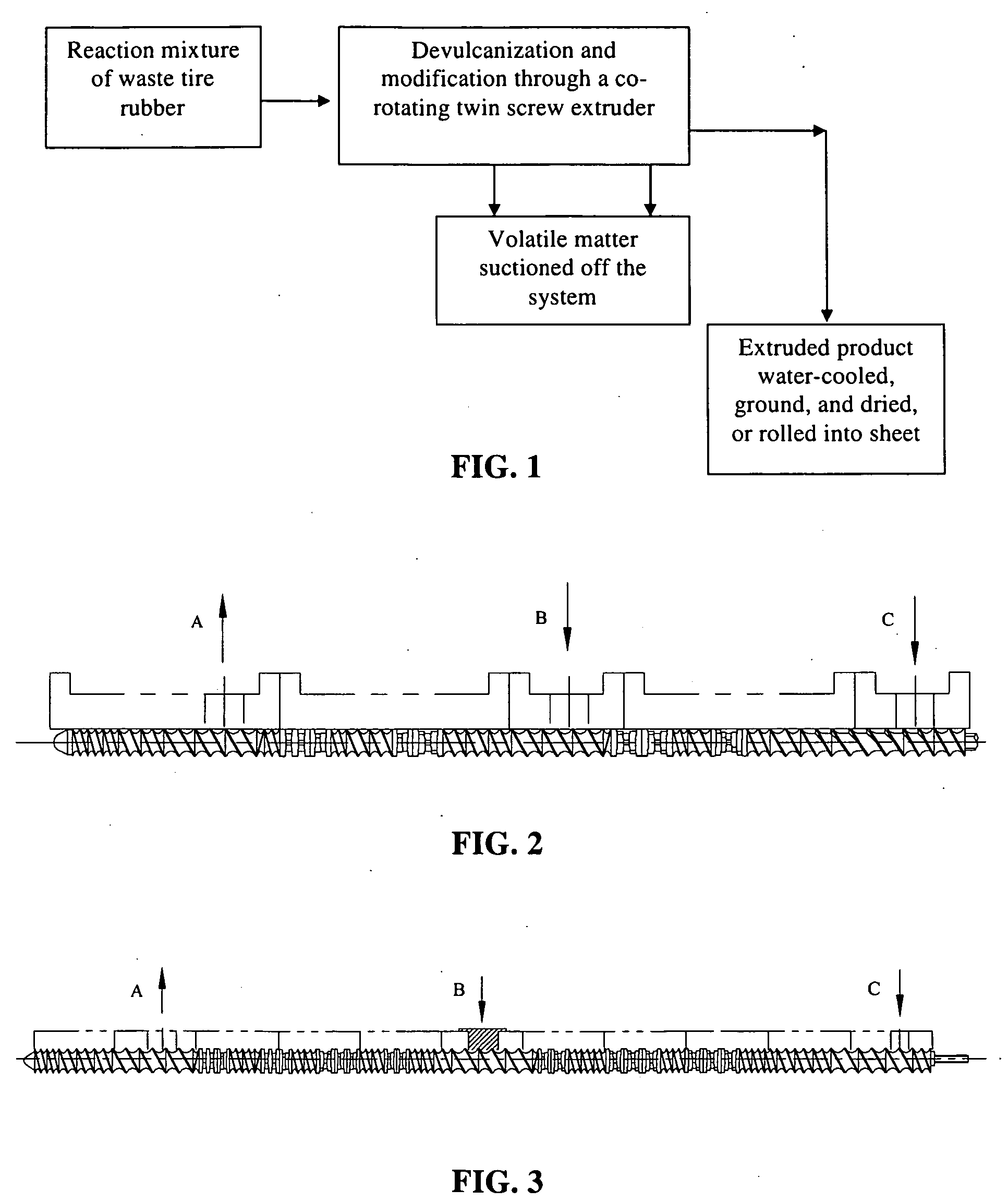Process for devulcanization of rubber
a technology of devulcanization and rubber, which is applied in the field of polymerization, can solve the problems of difficult recycling of cured rubber products, unable to meet the requirements of dvulcanization, and most used tires, hoses, belts, etc., and achieve the effect of effective devulcanization
- Summary
- Abstract
- Description
- Claims
- Application Information
AI Technical Summary
Benefits of technology
Problems solved by technology
Method used
Image
Examples
example 1
[0030]Ground waste tire rubber (about 20 mesh, having a content of 57.3% rubber, 30.1% carbon black, 6.2% ash and 6.4% volatiles) 800 g, EPDM (NDR 3745, obtained from DuPont) 200 g, antioxidant (Irganox 1010) 0.15 g, and calcium stearate 0.3 g were mixed. The mixture was fed into a co-rotating twin screw extruder B with a 35 mm diameter and a ratio of length to diameter of 45 (TE-35, purchased from Coperion Keya Machinery Co. Ltd). The extrusion temperature of 250° C. and screw rotation speed of 1000 rpm were maintained. The volatile matter produced in the devulcanization process was removed by a water-circle vacuum pump. An extruded product, referred to as devulcanized blend DGTR / EPDM, was obtained after water-cooling and drying.
[0031]The gel content of the devulcanized blend was measured using the Soxhlet extraction method, in which the extrusion product was packaged with 150-mesh cupro silk cloth and extracted in boiling xylene for 24 h. The residual products were dried under vac...
example 2
[0038]When EPDM was replaced by SBR compound (which contains 33.3% carbon black) in Example 1, the gel content of the devulcanized blend prepared at 800 rpm and 180° C. was 65.4%, the tensile strength, elongation at break, tearing strength and Shore hardness of the revulcanized rubber obtained was 17.1 MPa, 330%, 33.7 kN / m, and 73, respectively.
example 3
[0039]When EPDM was replaced by BR compound (which contains 33.3% carbon black) in Example 1, the gel content of the devulcanized blend prepared at 800 rpm and 180° C. was 70.9%, the tensile strength, elongation at break, tearing strength, and Shore hardness of the revulcanized rubber obtained were 17.0 MPa, 312%, 31.8 kN / m, and 72, respectively.
PUM
| Property | Measurement | Unit |
|---|---|---|
| temperature | aaaaa | aaaaa |
| temperature | aaaaa | aaaaa |
| particle size | aaaaa | aaaaa |
Abstract
Description
Claims
Application Information
 Login to View More
Login to View More - R&D
- Intellectual Property
- Life Sciences
- Materials
- Tech Scout
- Unparalleled Data Quality
- Higher Quality Content
- 60% Fewer Hallucinations
Browse by: Latest US Patents, China's latest patents, Technical Efficacy Thesaurus, Application Domain, Technology Topic, Popular Technical Reports.
© 2025 PatSnap. All rights reserved.Legal|Privacy policy|Modern Slavery Act Transparency Statement|Sitemap|About US| Contact US: help@patsnap.com


